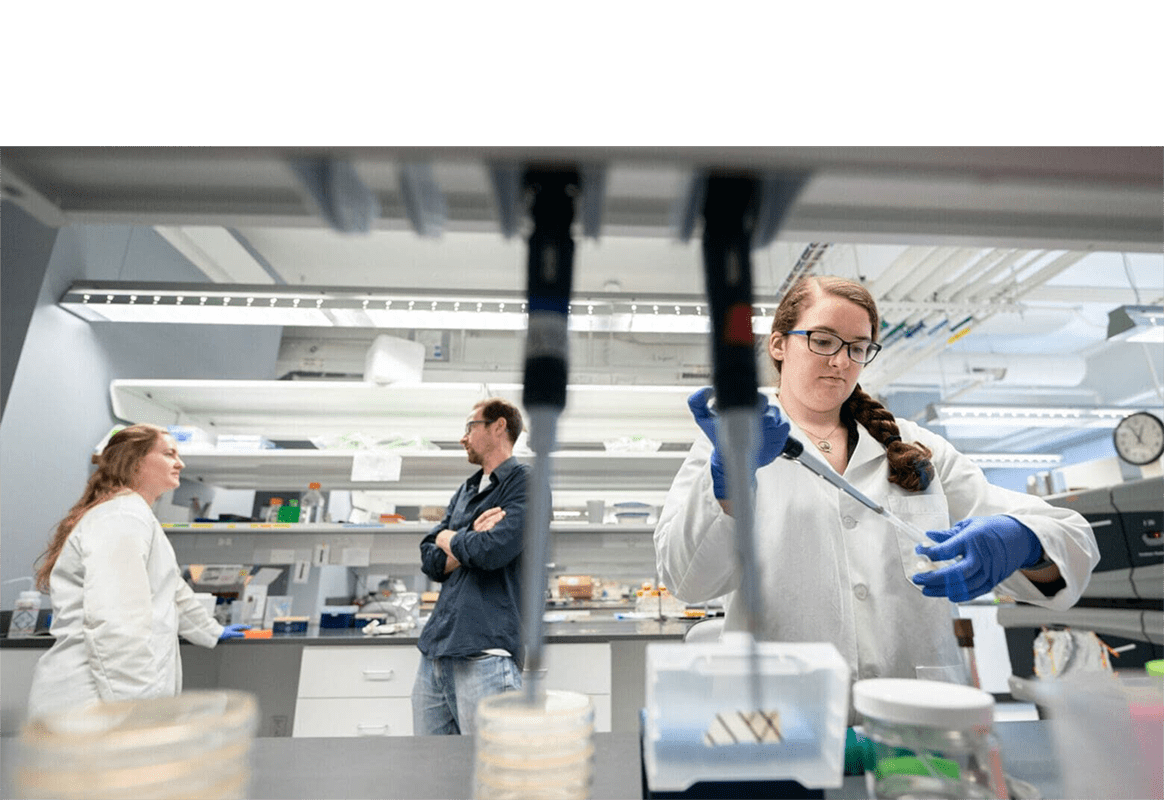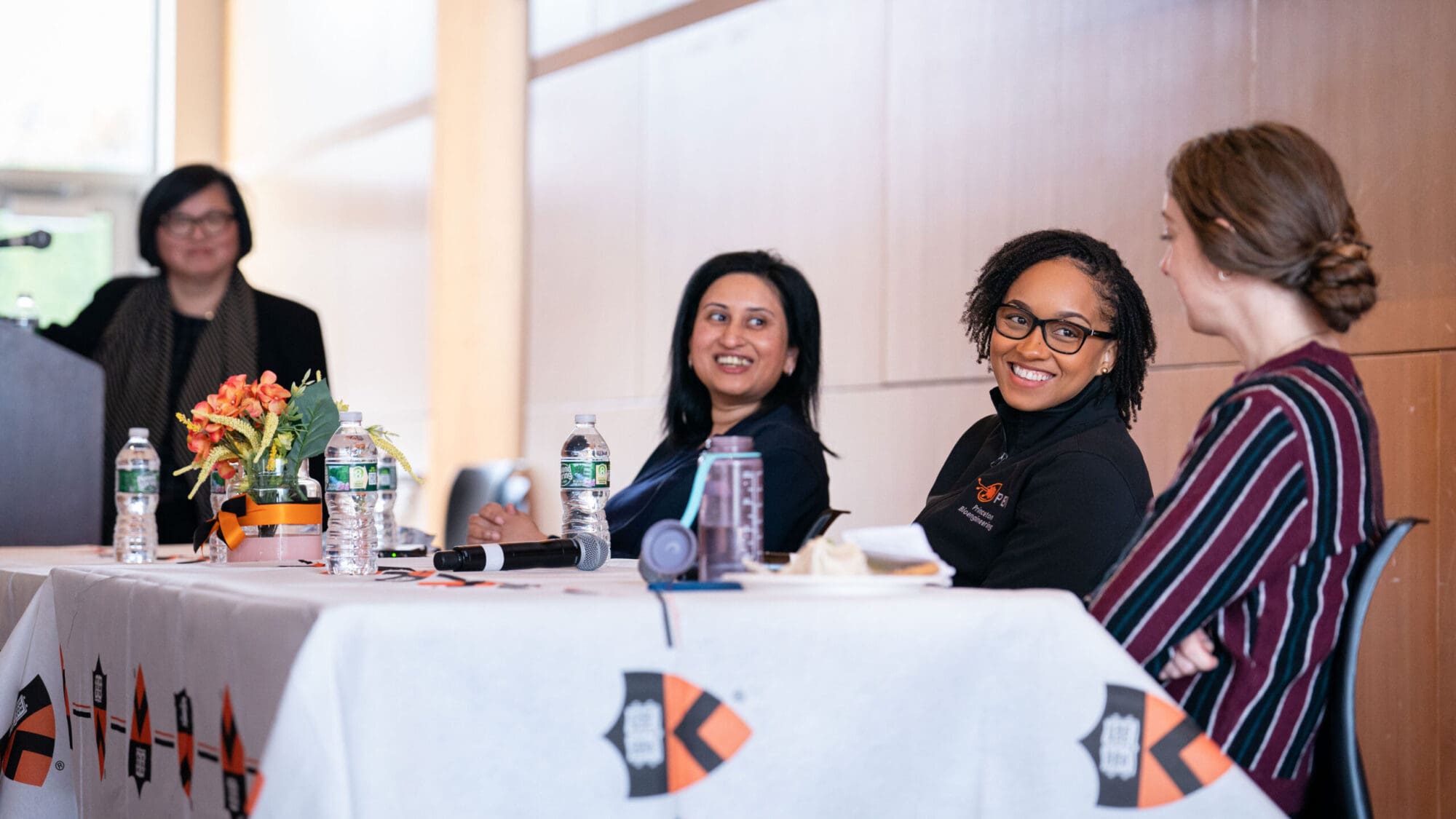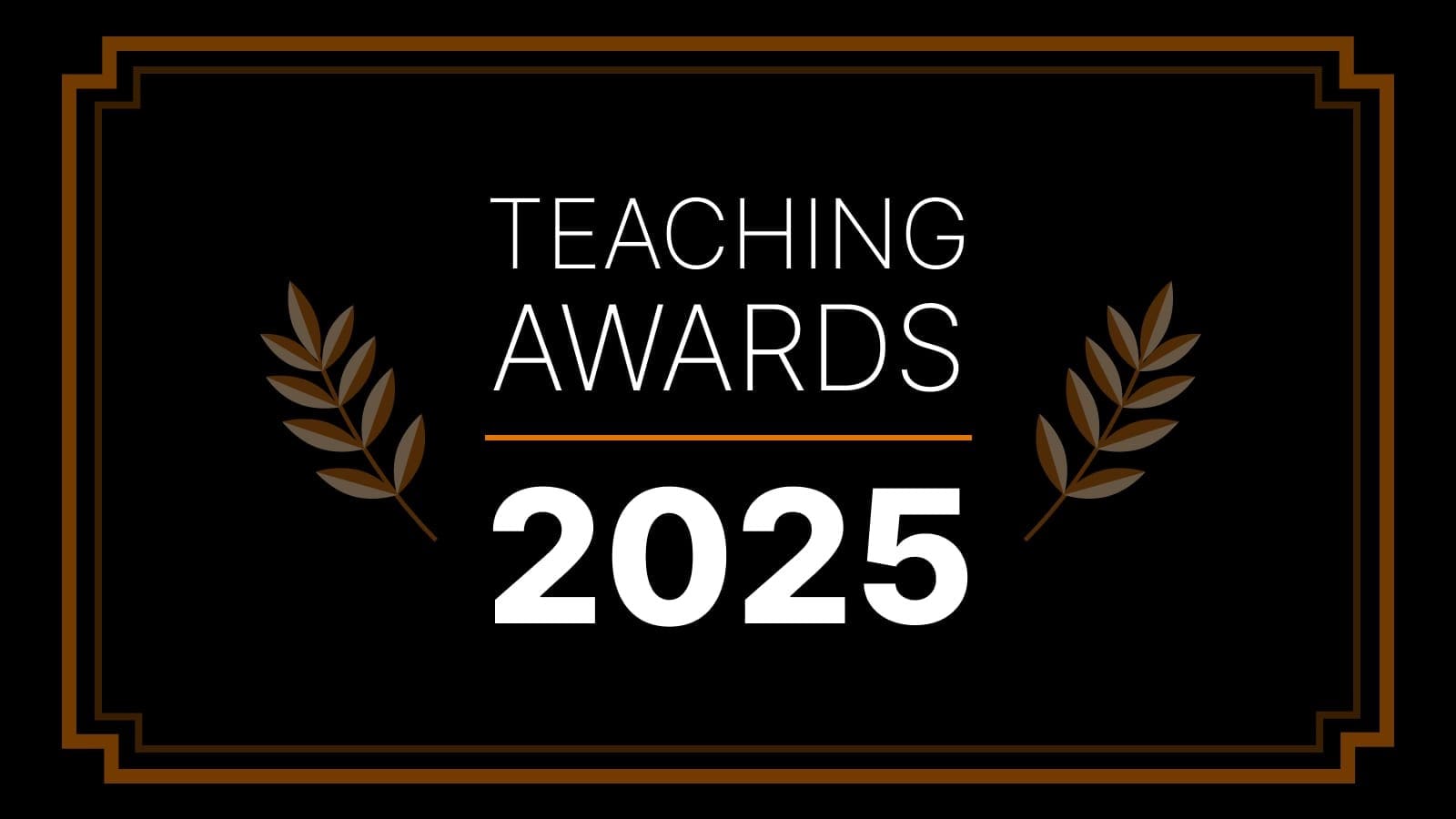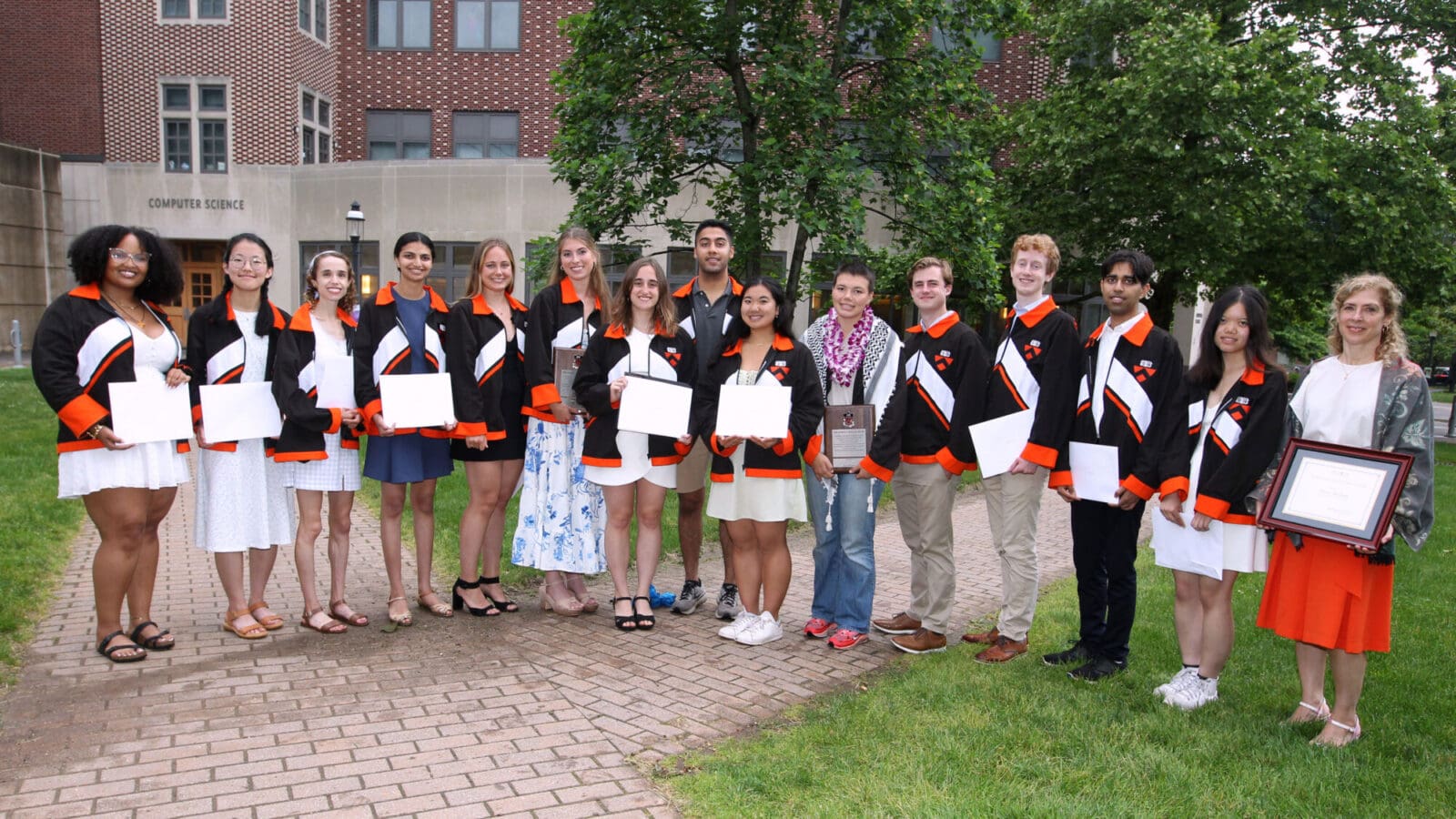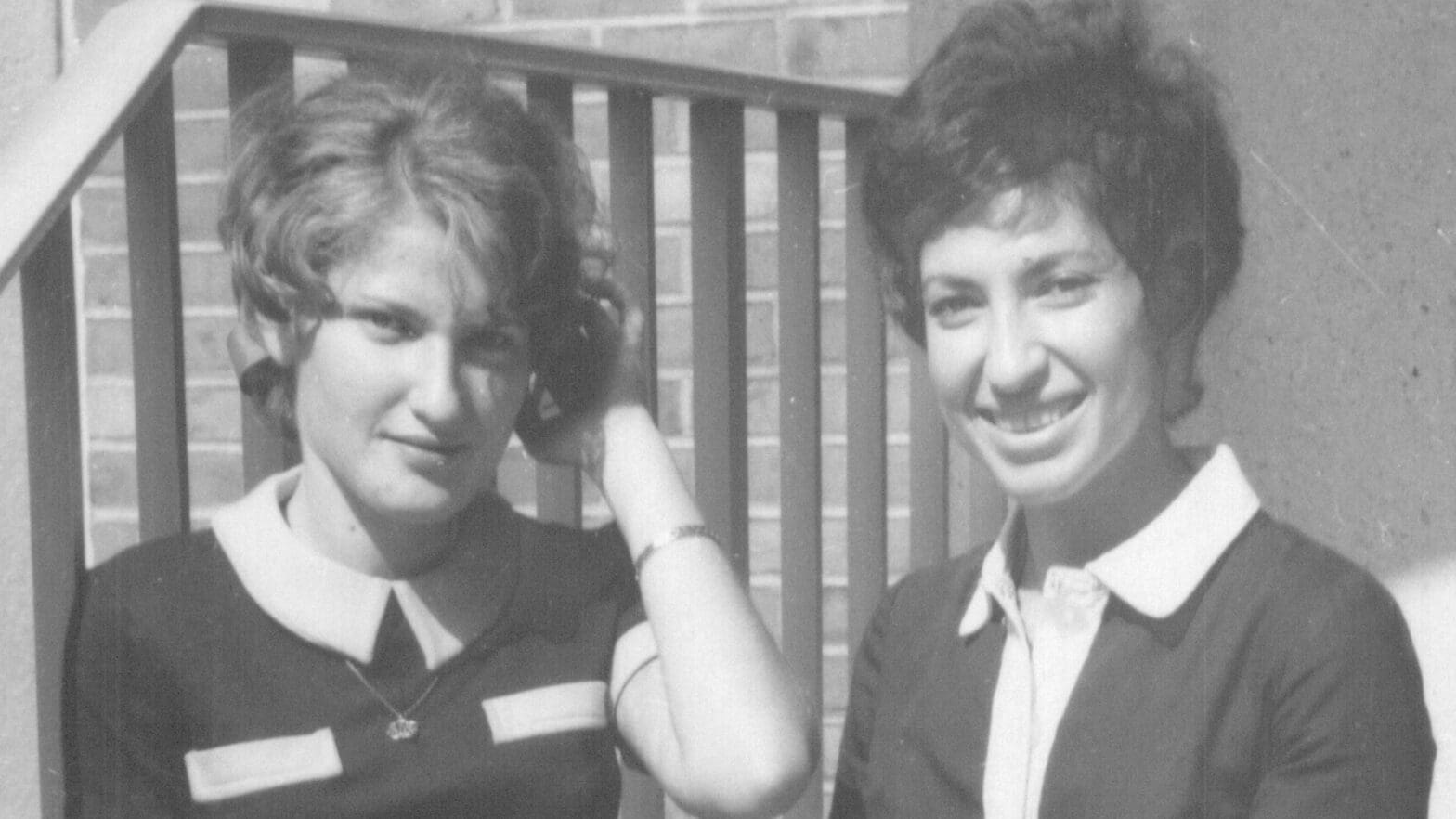
Part Five: Women at Princeton Engineering
By
on
This is from the series E100: Princeton Engineering’s 100th anniversary
#27
Who was the first woman to earn tenure on the Princeton Engineering faculty?
Despite earlier efforts to recruit and retain women to the faculty, it wasn’t until 1987 when the first woman earned tenure at the Princeton School of Engineering and Applied Science — and then another 12 years elapsed before the second and third, one of whom remains on the faculty today. Can you name any of these faculty members?
The first woman to achieve tenure on our faculty was Andrea LaPaugh of the Department of Computer Science, who joined the faculty in 1981, earned tenure in 1987, and became a full professor in 1995. She retired in 2019, becoming the first professor emerita in Princeton Engineering’s history (Emily Carter received the same designation on that day as well, as she departed to become a top executive at UCLA). LaPaugh served as head of Forbes Residential College from 2000 to 2004. Her research interests have focused on information discovery for large-scale digital collections, computer-aided design of digital systems, and algorithm foundations. LaPaugh was the only tenured woman on the Princeton Engineering faculty for 12 years, and worked to recruit more women and underrepresented minorities to the faculty. Two more women earned tenure in 1998: Ruby Lee, a pioneer in computer architecture, hardware security and multimedia; and T. Kyle Vanderlick, a professor of chemical and biological engineering. Vanderlick became chair of that department in 2004, and moved to Yale as engineering dean in 2008. She served in that role until stepping down in 2017.
#28
The journey of our first female undergraduate student
Princeton University began admitting women to its undergraduate program in 1969. Our school records show that the first woman entered Princeton Engineering’s B.S.E. program in 1970. Patricia Falcone ‘74, who is now the deputy director for science and technology at the Livermore Lab in California, gave an interview to the She Roars podcast in 2019 in which she recalled the occasionally unsettling experience of being that pioneer. She remembered when she arrived for a Freshman Week engineering meeting: “It was a big room in the EQuad. When I got to the door, the entire room burst into applause and started clapping, going, ‘a girl, girl!’” She said the experience made her feel “quite odd.” In an oral history compiled by Princeton Engineering alumnae Yvonne Ng ‘91 and Jennifer Rexford ‘91, Falcone recalled being asked for the “women’s point of view” in class, and struggling to find a restroom in Palmer Hall. But she also said she appreciated the care the faculty took in her success, encouraging her to use her time to study rather than getting a part-time job. “It was heady advice for someone who thought she might not belong at as exalted a place as Princeton,” she said. She later served as the Senate-confirmed associate director of the Office of Science and Technology Policy for National Security and International Affairs under Barack Obama. By the time Falcone was a senior, there were 38 women enrolled at Princeton Engineering, or about 7 percent of the student body. There were 104 women as part of the engineering school’s Class of 2020, roughly a third of the class; Dean Andrea Goldsmith and her team are working hard to bring the student body to gender parity. Although Falcone was likely the first B.S.E. student to enroll at Princeton Engineering, she was not the first to graduate. That was Kit Meyers Donner ‘73, who had changed majors. And Jan Cuny ‘73 received her A.B. in electrical engineering and computer science, although this was not a formal degree program of Princeton Engineering at the time. Cuny would go on to establish the Broadening Participation in Computing program at the National Science Foundation and win the 2017 Distinguished Service Award from The Association for Computing Machinery.
#29
Name these pioneering twin sister Princeton Engineering Ph.D.’s
Three of Princeton Engineering’s first female graduate students had two things in common: They were all French, and they received degrees in what was then known as Aerospace and Mechanical Sciences. The first, according to an oral history book of women at Princeton Engineering, was Genevieve Segol, who enrolled in 1969 and received her master’s degree in 1971, staying on to receive her doctorate in civil and geological engineering in 1974. The others were a pair of twin sisters who were vacationing in the United States in 1969 during a break from their studies at the University of Sciences of Paris. Family friends near New York suggested taking a tour of an American university, and they chose Princeton because of its proximity. As they toured the campus they spoke with faculty members, and one, impressed, suggested they apply. The rest is history: Both received doctorates; one sister went on to be a senior scientist at NASA, and an MAE departmental award for an outstanding female grad student is named for the other, who tragically died in 1980. Can you name either twin?
After they were encouraged to apply by faculty during an impromptu campus visit, fraternal twins Larisse and Josette Rosentweig of France attended Princeton Engineering as two of the first women to attend graduate school here. They received Amelia Earhart Fellowships from Zonta International, an international service organization of women executives, to study aerospace and mechanical sciences. Josette Rosentweig Bellan *74 recalls the experience making news in the New York Times and in the French newspapers, and having the scholarships celebrated by Zonta through a European/U.S. evening dinner event on the second floor of the Eiffel Tower. Bellan, who now works as a senior research scientist at NASA’s Jet Propulsion Laboratory at Cal Tech, called her time at Princeton “a life defining experience both scientifically and personally. Scientifically, I learned how to approach new topics with which I was not familiar and how to do research at the forefront of new fields.” And despite some initial opposition from one university official to accepting women, she said that once onsite, her overwhelmingly male fellow students were all friendly and supportive, often going above and beyond to help her adjust and included her in the study groups designed to prepare for the General Examination. Larisse also gained her doctorate from Princeton in 1974, but tragically died in 1980. Josette Bellan and her husband, Paul Bellan *75 (a professor at Cal Tech), set up a scholarship in her sister’s memory, given to women getting a doctorate in mechanical and aerospace engineering, typically in at least her third year. The most recent recipient of the award was Anastasia Bizyaeva, who creates models and algorithms of group opinion dynamics.Bizyaeva is in the lab of Naomi Leonard ’85.
#30
“I recommend getting out of your comfort zone and trying things, because how do you know what you like and what you don’t like unless you try it.” – Frances Arnold ’79
Frances Arnold ’79, who would go on to win the 2018 Nobel Prize in Chemistry, arrived at Princeton during its early years of coeducation. Speaking to the She Roars podcast in December 2018, Arnold said Princeton offered the opportunity to make connections from literature and philosophy that helped inform her understanding of evolution. “I got a very good foundational education at the same time I was learning a few skills in mechanical engineering, but I never thought I would be a mechanical engineer as I was doing this. I wanted to be an educated person and find out what it was that I really wanted to do, so those skills were important to me to acquire.” Today, Arnold is the Linus Pauling Professor of Chemical Engineering, Bioengineering and Biochemistry at Cal Tech. She was recognized by the Nobel Prize for pioneering the use of directed evolution to design new enzymes, with applications from pharmaceuticals to renewable fuels. (Photo by Steve Anderson for Princeton Alumni Weekly)
#31
Who preceded Andrea Goldsmith as dean of Princeton Engineering?
Andrea Goldsmith arrived in 2020 as the tenth dean in our school’s history, succeeding interim dean H. Vincent Poor, who had also served as dean from 2006 to 2016. Before Goldsmith, two other women served as permanent dean. Which of these deans served from 2016 to 2019? Extra points if you can name the woman who served as our dean from 2003 to 2006.
During her time at Princeton, Emily Carter spoke of a “defining moment” in her career when she focused her energies on energy — it was reading the 2007 United Nations report that made clear that humans’ burning of fossil fuels was causing climate change. That focus led to her role as the founding director of the Andlinger Center for Energy and the Environment. In this 2012 photo she is overseeing the construction of the new Andlinger building. But Carter, who would be elevated to dean of Princeton Engineering in 2016, has also shown an equal commitment during her career to inclusion. During a 2014 symposium on women in STEM, Carter reflected on the obstacles she encountered early in her career, from facing condescending remarks to outright aggression. She said she persevered because she was confident, but she noted that many women choose to leave STEM fields long before realizing their potential. As dean, she made it a priority to recruit and retain women and underrepresented minorities to the student body and faculty. “My goal is that before I retire I want science, engineering and mathematics to look more like the makeup of the general population, but for that to happen we have to change the culture,” Carter said. “STEM has so much to contribute to the world and should be welcoming for everyone who wants to be a part of it.” Carter left in 2019 to become executive vice chancellor and provost at UCLA. She was not the first female dean of Princeton Engineering; Maria Klawe, who has also been a passionate advocate for women in STEM, and who broke many barriers during her career, served as dean from 2003-2006. She departed to become president of Harvey Mudd College, a position she still holds. Carter returns to the Princeton faculty this winter.
#32
“This university is where I had the opportunity to fully immerse myself in what became one of the greatest passions of my life — the exploration of science.” – Lisa P. Jackson *86
Lisa P. Jackson, who grew up in New Orleans, graduated from an all-girls’ high school, originally wanting to be a doctor, but realized that through environmental protection, she could keep people from getting sick in the first place. Her interest in science and math would set her on a path that led through Princeton, where she was one of only a few women in Princeton’s chemical engineering graduate program in the mid-1980s. In a speech at the She Roars conference in 2011, she recalled building a support structure: her friends; a female administrator who invited her over for dinner and washed her clothes; and a woman who worked in housing who looked out for her, making sure that “back then, in a community that wasn’t as welcoming for people of color as it should have been all the time, that you had a place to live.” Jackson starting her career as a U.S. Environmental Protection Agency staff scientist in 1987. She worked her way up to lead the New Jersey Department of Environmental Protection in 2006, and in 2009 was named by President Barack Obama to lead the U.S. Environmental Protection Agency where she was the first EPA administrator to regulate greenhouse gas emissions. Today, Jackson serves as vice president of environment, policy and social initiatives for Apple. Throughout her career, she has underscored the importance of making science and engineering welcoming for all people. As she said upon receiving Princeton’s James Madison alumni medal in 2012, “We have to be diligent about the subtle but pervasive discouragement women can encounter when they think about taking a computer science class, or want to learn more about physics, or consider a career in robotics,” she said. “We must change the perception that science is a man’s field.”
#33
Can you name this pioneering faculty member?
Our records show that the first two women to join the Princeton Engineering faculty, both as assistant professors, were hired on September 1, 1974. One was Lynne Holt, who was an assistant professor of civil engineering who was on the faculty until 1977. The other was the woman shown in this newspaper clip, whose appointment was in civil engineering and politics. She may very well have been the first Princeton faculty member to give birth, according to a Princeton Packet report in 1975. Although she only stayed at Princeton for four years, she would go on to become one of the foremost voices in international environmental law. Who is she?
The first two women joined the Princeton Engineering faculty on September 1, 1974, including assistant professor Edith Brown Weiss, whose appointment was in civil engineering and politics. Weiss would go on to become a University Professor at Georgetown and one of the foremost voices in international environmental law, but her first days at Princeton were occupied with more than research. When Weiss arrived at Princeton with a law degree from Harvard and a doctorate in political science from the University of California-Berkeley, she was pregnant with her son, Jed. She was likely the first Princeton faculty member to give birth. There was no bathroom at her end of the building, and walking to the other end of the building was hard, she said in a recent email. But Dean Robert Jahn, who made it his personal mission to bring women into the school, ordered a nearby men’s room converted into a women’s room. And she noted she was able to breastfeed her son by closing the door to her office. Weiss said she enjoyed her time at Princeton, teaching water law and drawing attention to the links between surface water and groundwater within that area of law. “Forging the link between engineering and law was critical,” she said, noting many of her undergraduate students went on to law school. When she arrived, the first group of women were graduating, so the vast majority of people around her were men. But she said the few women who were at Princeton at that time were supportive, including some part-time lecturers, and especially the dean of student affairs, Adele Simmons. In her 1989 book, “In Fairness to Future Generations: International Law, Common Patrimony, and Intergenerational Equity,” Weiss writes about assessing the true cost of environmental damage. “Sustainability requires that we look at the earth and its resources not only as an investment opportunity, but as a trust passed to us by our ancestors for our benefit, but also to be passed on to our descendants for their use.” The third female faculty member at Princeton Engineering was Margaret Fels, who arrived in 1975, and whose focus was also the environment. (Photo courtesy of Princeton Packet, used with permission; photo by Stuart Crump, Jr.)

